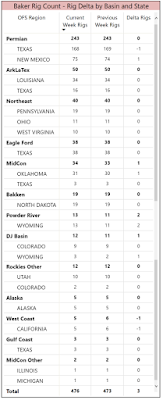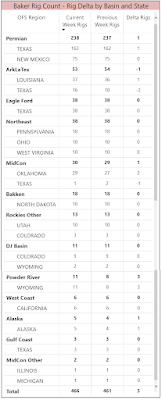This week, the Baker Hughes Weekly US Land Rig Count was up 2 rigs to finish at 497 active rigs. The Permian added 4 rigs while the Northeast lost 2 rigs and the Eagle Ford lost 1 rig.
This week, the EIA released it's latest Drilled but Uncompleted (DUC) information. Figure 2 shows EIA DUC data from 2013 to July 2021. The EIA DUC calculation has a significant lag because they use public sources (FracFocus) and state reports. Most operators usually report within 3 months to these agencies and the EIA reports with a 3 month lag. The EIA usually doesn't publish their information until most of the operator data is in the system
Unsurprisingly, there has been a significant drawdown in the DUC count since the beginning of the year. Rig Count has not rebounded to previous levels and resulting in fewer new wells to be added to the DUC count. Operators completed their backlog of DUCs while slowly increasing rig count. They have maintained oil production levels while mainly completing DUCs and a few new wells.
The nature of the US oil industry is that there will always be a number of DUCs in the system. The generally accepted number for balanced DUCs versus new drilling is between 5000 and 6000 DUCs. Above 6000 DUCs and the rigs are out drilling the frac fleets. Under 5000 DUCs, and the frac fleets are completing more wells than are being drilled. Based on the latest data, rig count needs to increase or the number of active frac fleets will probably be reduced.
 |
| Figure 1: Baker Hughes Weekly US Land Rig Count - Sept 10 2021 (Source: Baker Hughes) |
 |
| Table 1: Baker Hughes US Land Weekly Rig Count by State - Sept 10 2021 (Source: Baker Hughes) |
 |
| EIA Regional DUC Information by Region - Sept 2021 (Source: EIA) |












